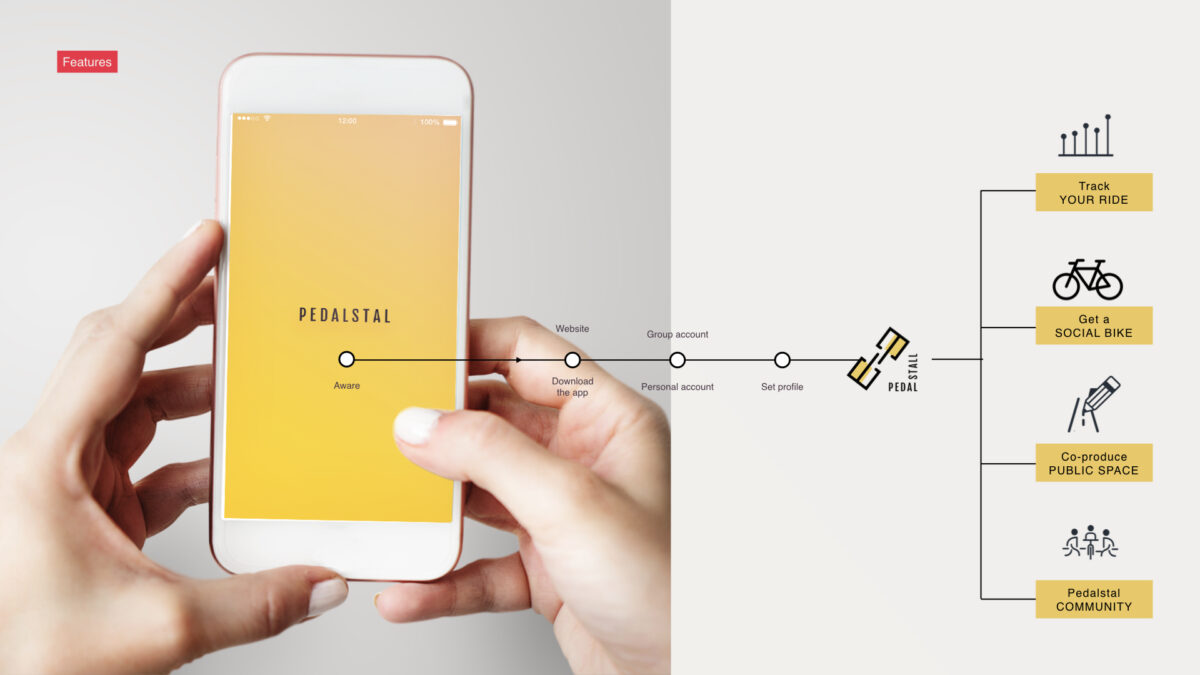
Bradford is a city in West Yorkshire where air pollution is causing an increasing level of asthma in children and serious respiratory problems in its citizens, even causing deaths. The municipality holds a considerable number of hotspots with high levels of air pollutants such as nitrogen dioxide (NO2) and particulate matter (PM) caused mostly by traffic, congestion and a heavy use of private cars. One of these areas is the Shipley-Bradford Corridor, a neuralgic transit highway, where the council is investing in new infrastructure improvements to incentivise sustainable transport with walking paths, green spaces and BGI (Blue Green Infraestructures).
However, these top-down interventions are having little to nothing impact on drivers and citizens’ behaviour change towards more sustainable ways of transport. Citizens even perceive some contradictions in policy and strategies adopted by the council such as promoting new parking spots or widening roads. If we want to engage citizens and stakeholders in our interventions, sustainable relationships and partnerships might be designed and explored with them along the process. Bradford City Council, one of the partners of BEGIN (Interreg) project, brought this challenge to the students of Service Design in order to create innovative service propositions and new citizen engagement models. Pedalstal is an academic proposal developed together with my lovely team, Astha Johri and Emilia D’Orazio, both also students of the MA of Service Design.
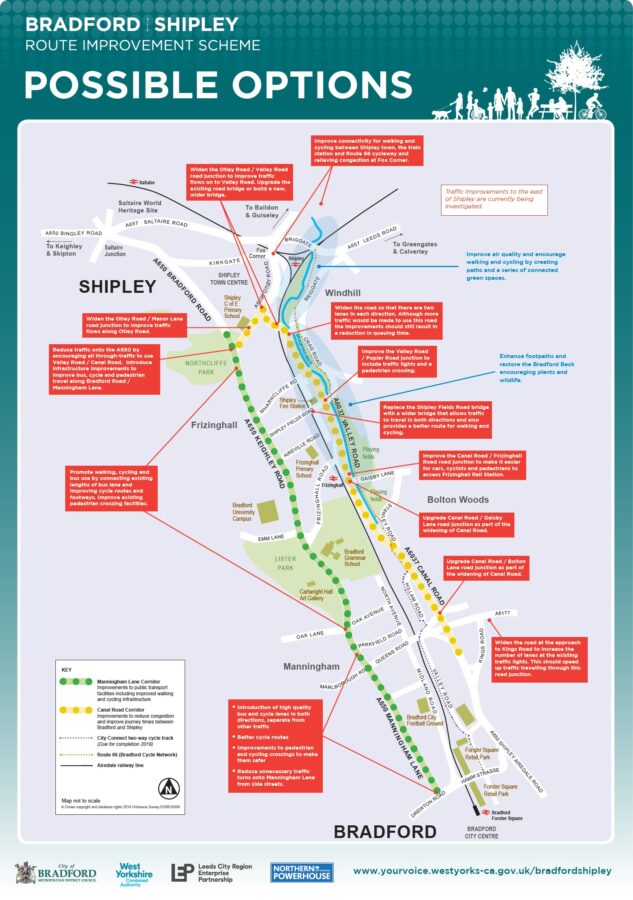
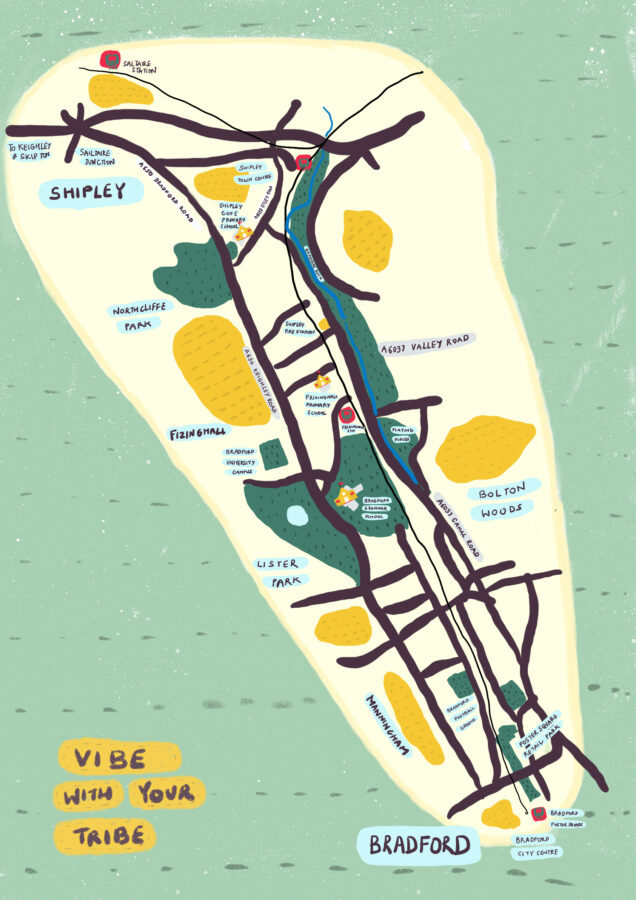
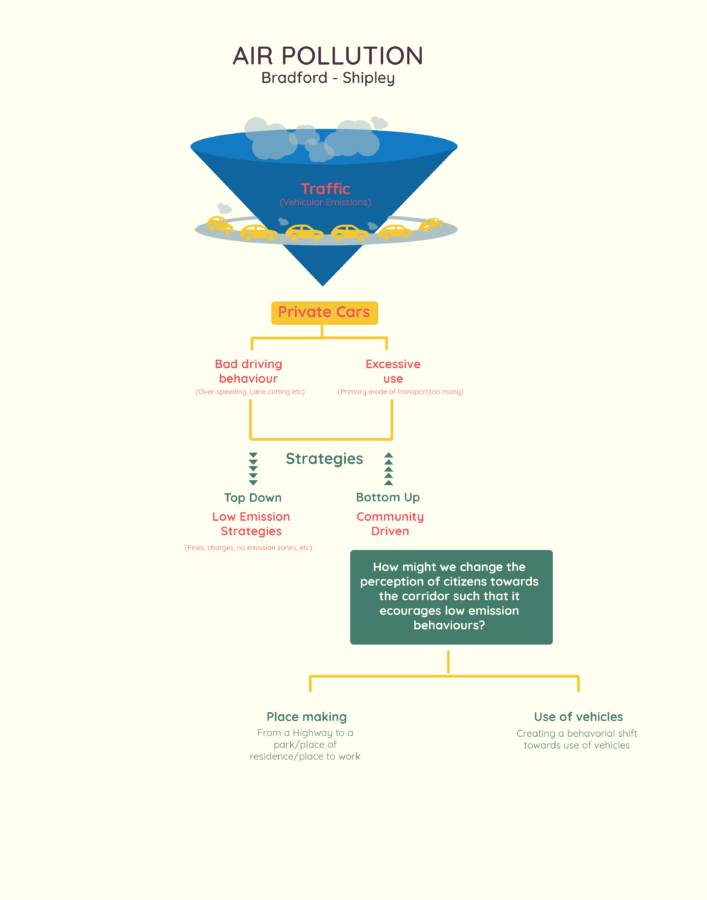
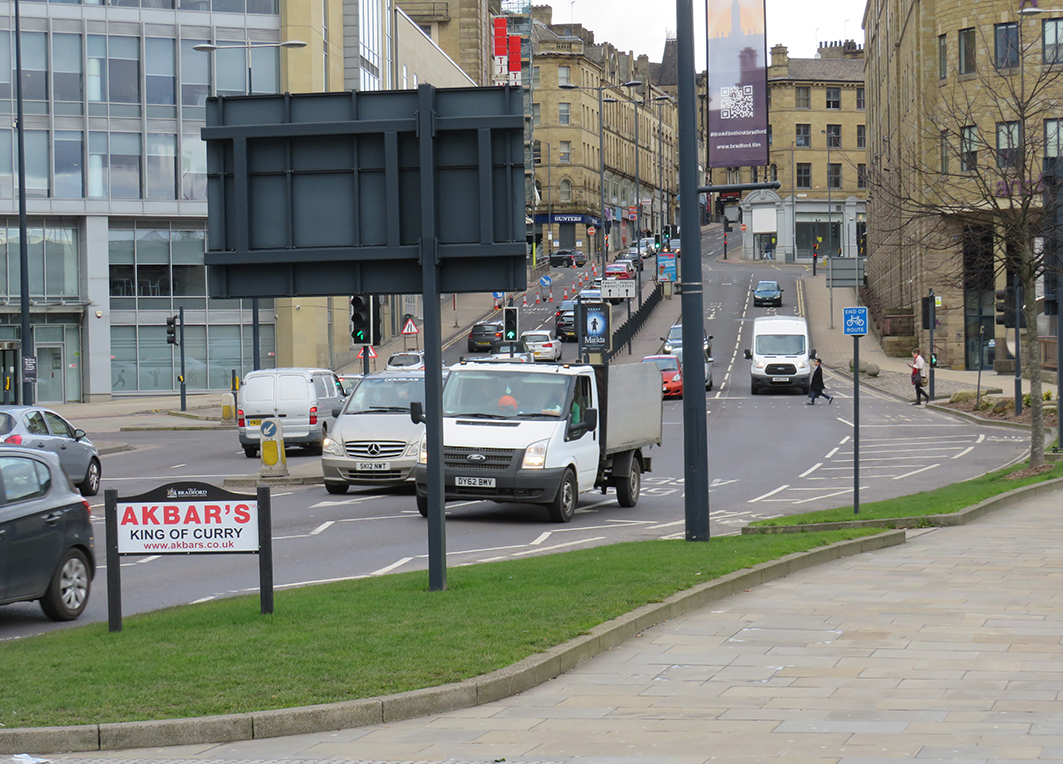
The main finding related to sustainable means of transport was that the transition towards the use of cycling is not achieved by constructing cycle paths or setting a new bike sharing system. Additionally we identified a nurturing cycling ecosystem integrated by a diversity of elements such as cycling clubs, a pool of bikes free to use, vibrant cycling organizations offering activities, air pollution city levels displays, etc. However this ecosystem is fragmented and poorly connected.
Pedalstal is a connector that aligns, visualises and points out the value of the whole cycling ecosystem.
Pedalstal provides Bradfordians with a toolkit of resources to facilitate and promote a safe and motivating cycling experience, to be an active member in the urban transformations and to collectively contribute to reduce air pollution. Pedalstal has six core features:
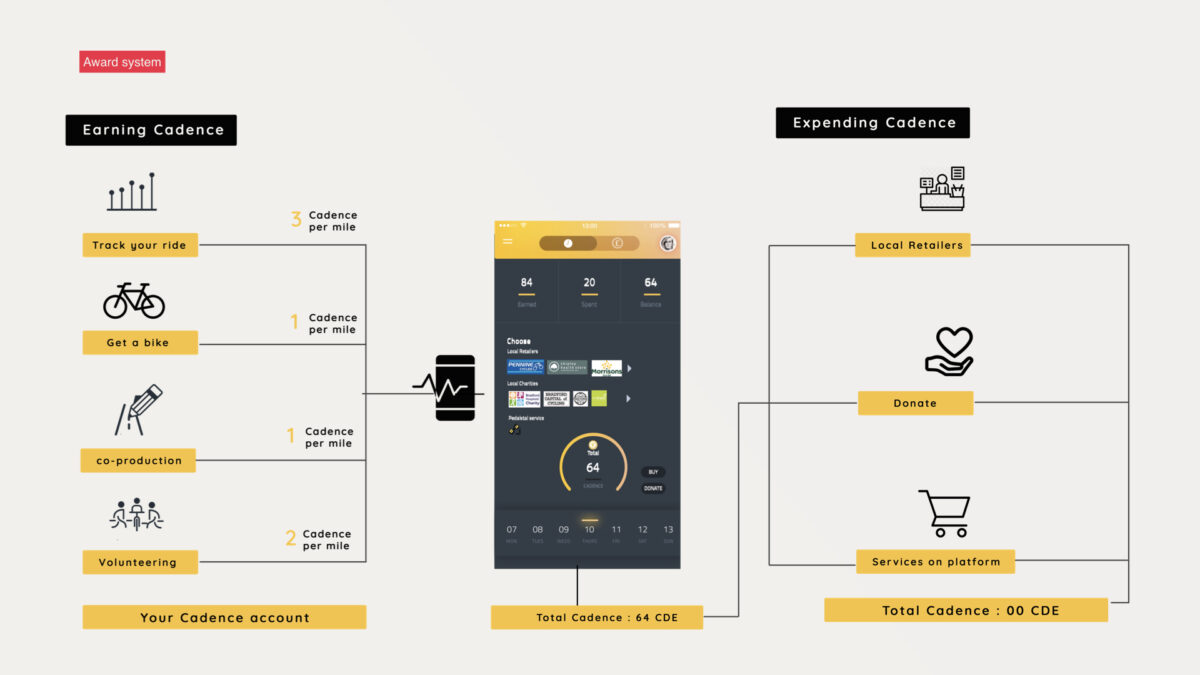
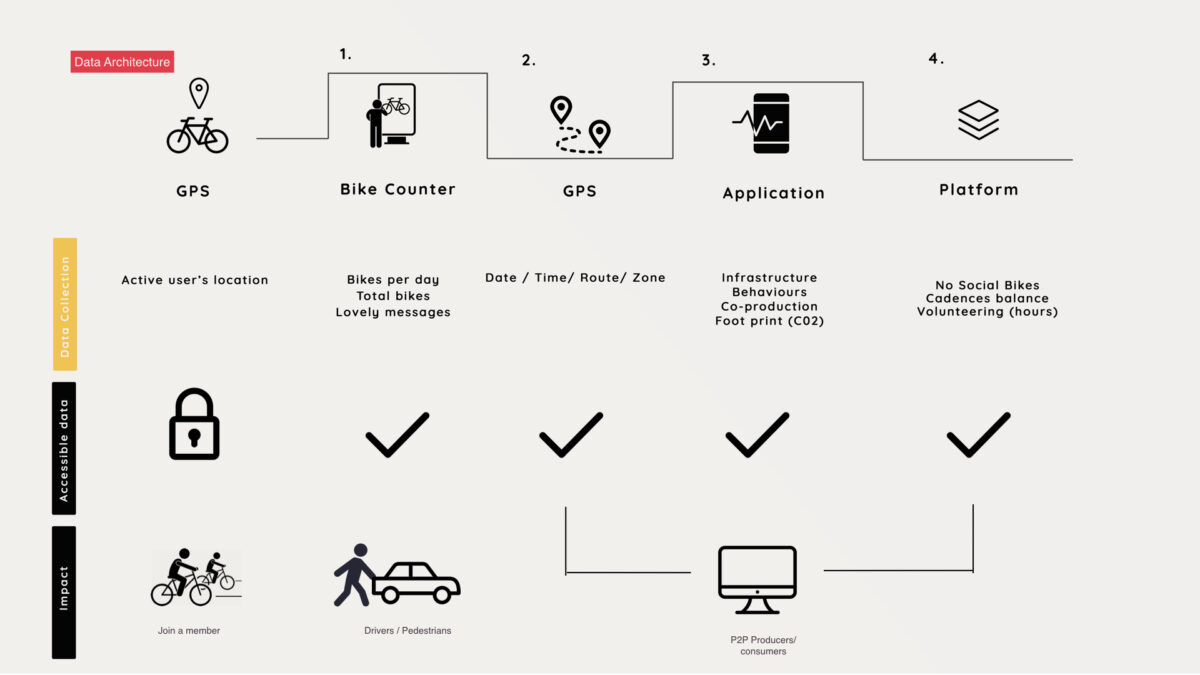
Our process was a mix of work-studio where we did secondary research, designed methodologies, synthesized and categorised insights and prototyped mock-ups, and a few discovery days in the field, in Bradford and Shipley. We firstly went deep into detailed research to understand the City Council Plan, such as the Shipley and Canal Road Corridor Area Action Plan (AAP) that provides the planning framework for the regeneration of the area. We carried out around six interviews with technicians and civil servants in charge of the urban infraestructures, air pollution strategy or civic engagement.
During the first discovery days we interviewed more citizens, walked through the canal and documented the observations with videos, photos and notes. Some of the insights were contrasted with a group of technicians during the first workshop in the City Council in order to identify the opportunities and barriers to develop actions on air pollution involving stakeholders.
Building personas helped us to understand and categorise the barriers that influence the adoption of a cycling culture in three groups: infraestructures, psychological barriers and competences; and then, design solutions for them. These personas were used in the second discovery round in Bradford to prototype different solutions and scenarios. Finally a diversity of mock-ups, service concepts, ecosystem and stakeholder maps were designed in studio and presented in Bradford City Council. One of the impacts of this academic project was the experience that the Council Staff had with new methods and approaches. It was also the understanding and learning about the convenience of developing a new strategy based on the combination of top-down and bottom-up processes to engage stakeholders and do innovation in policy making.
I’m afraid to cross the street to reach the bike route because it is a highway. (Cyclist interviewed )
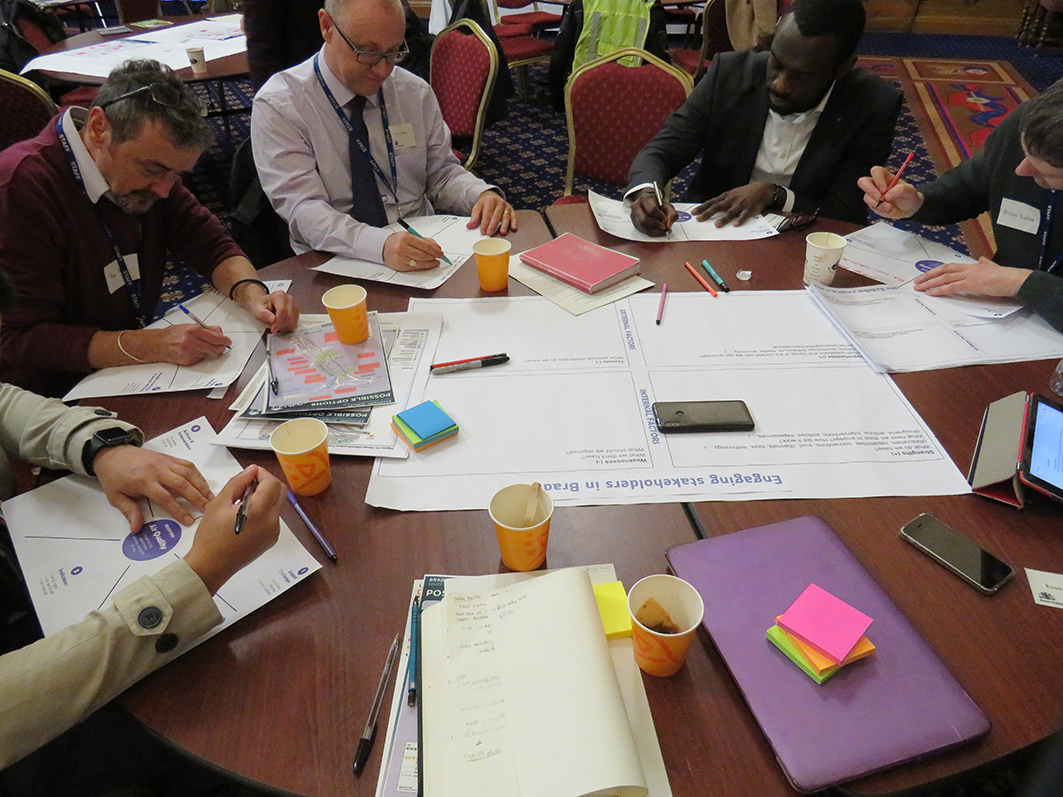
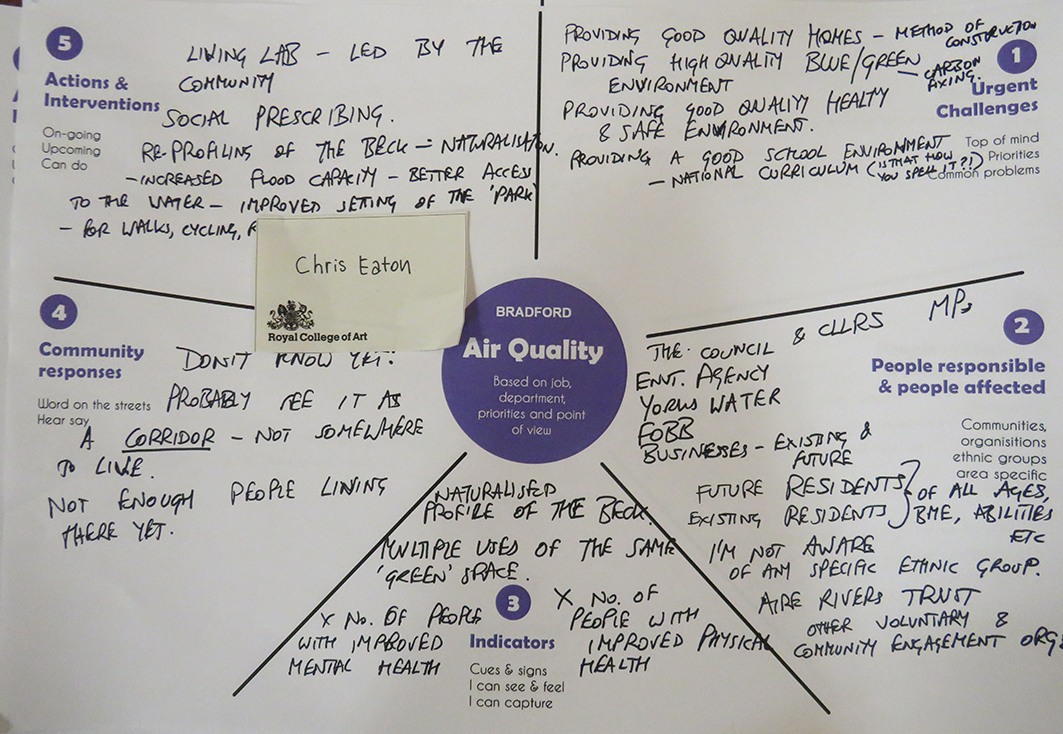
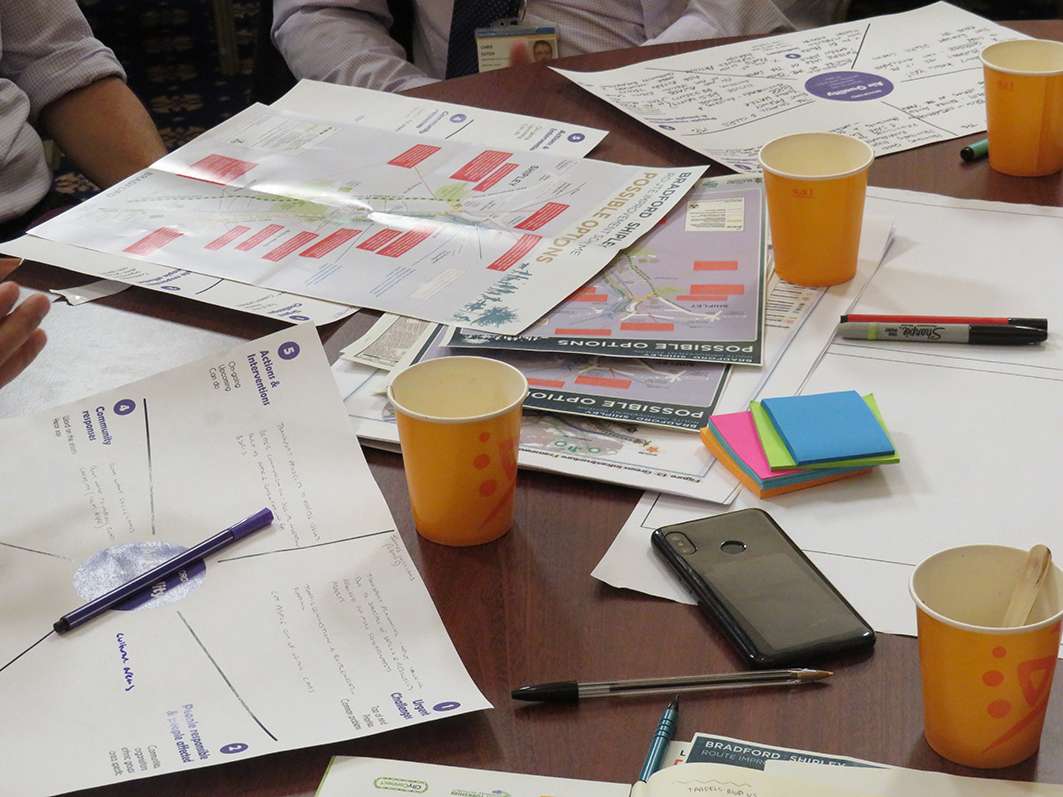
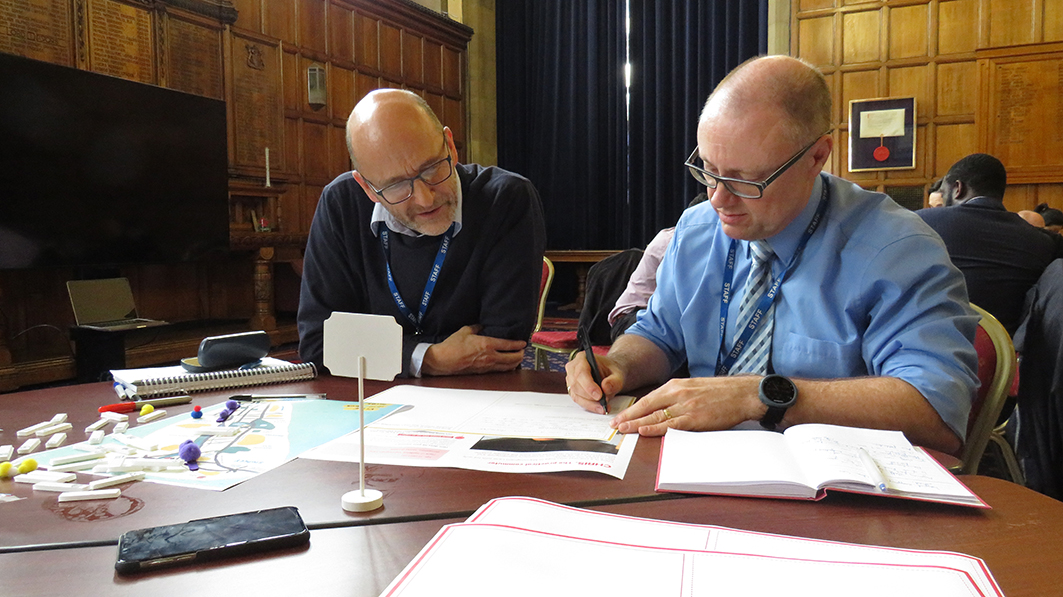
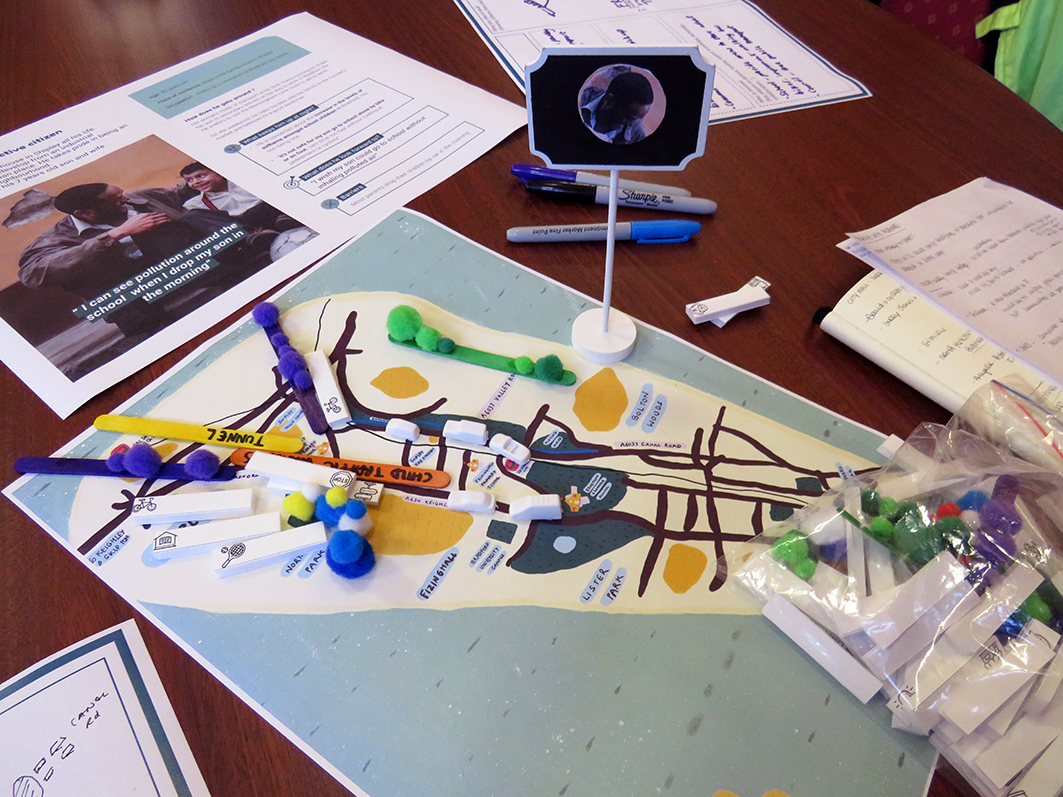
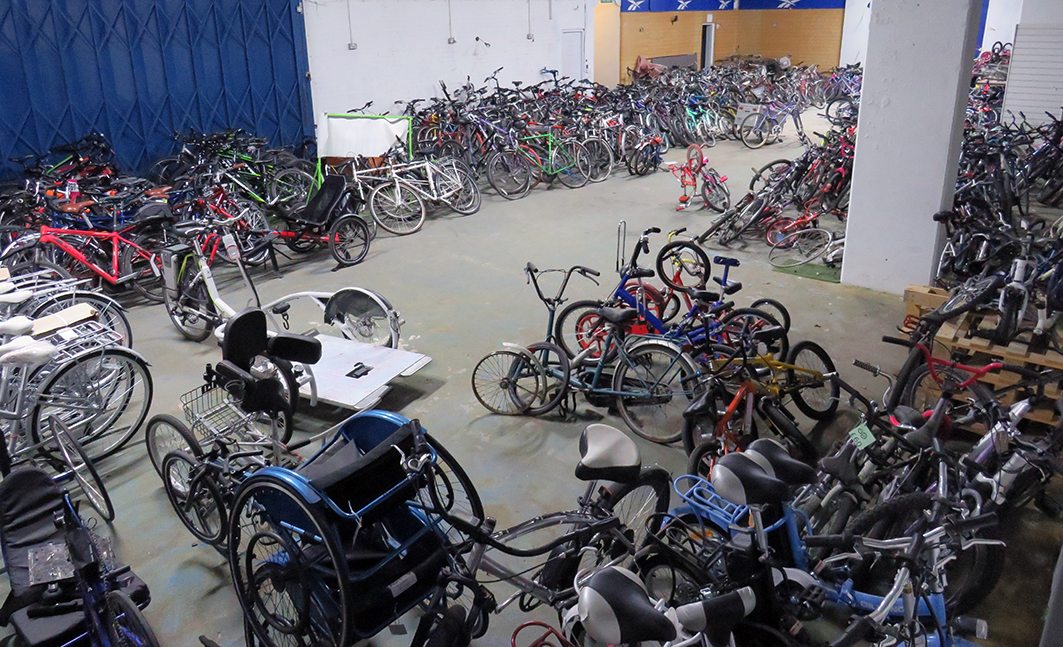
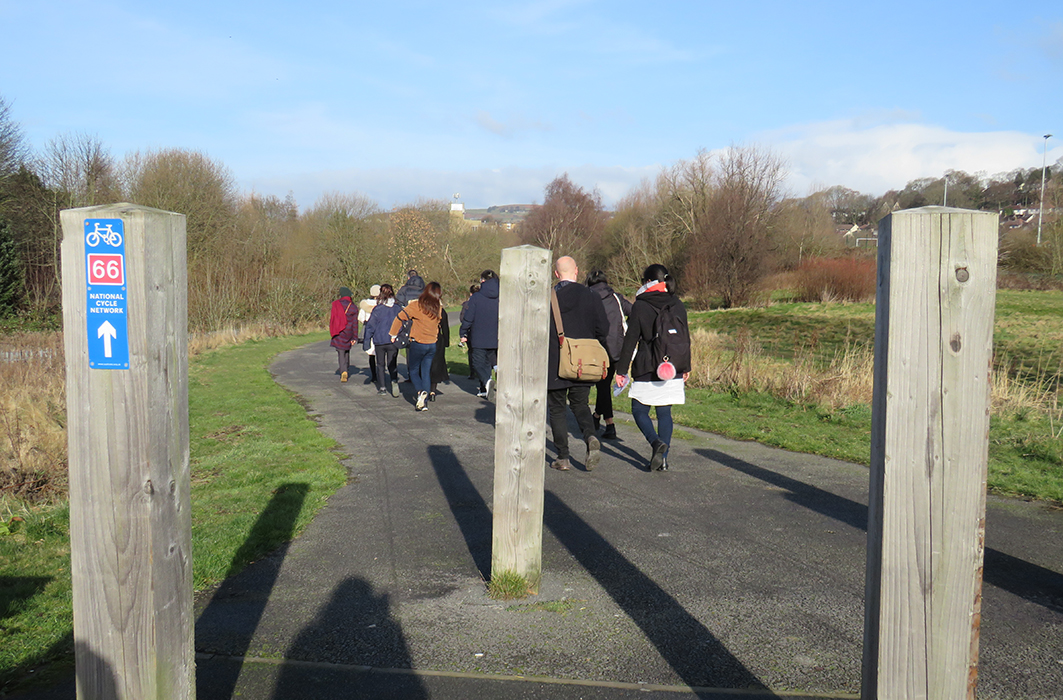
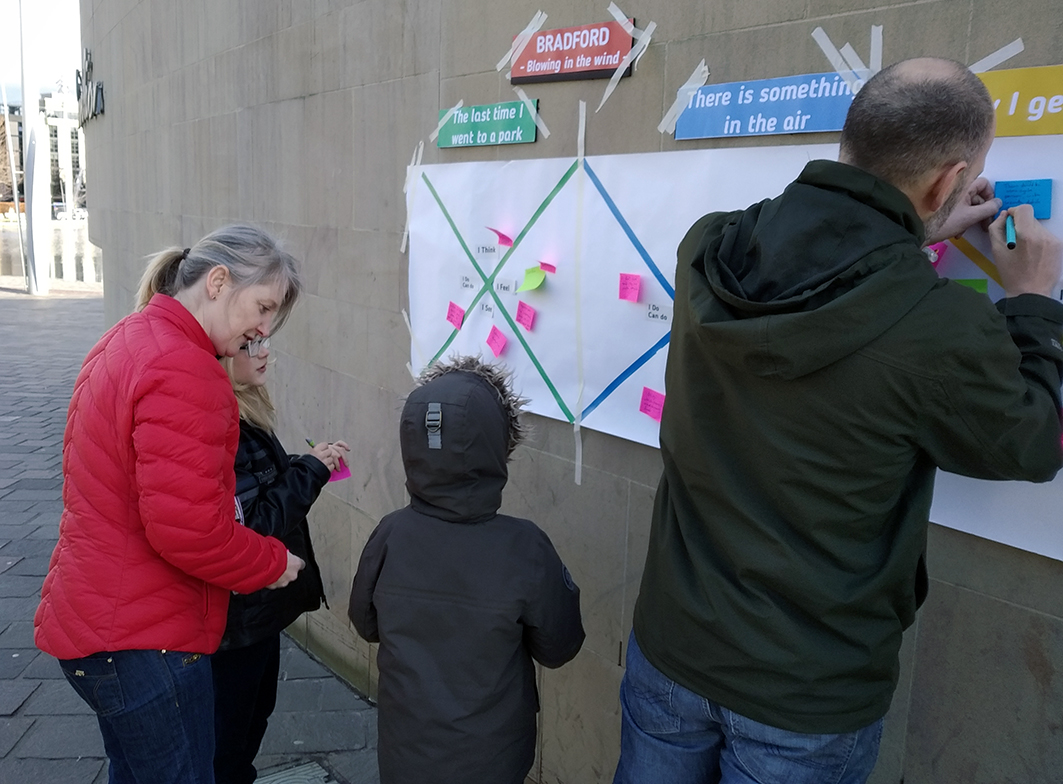
Client: Bradford City Council / Begin EU partnering RCA MA Service Design
Team: Emilia D’Orazio and Astha Johri
Date: January – March 2019
My Role: Service Designer | Facilitator
Key Methods: Creative toolkit. Participant observation.
Co-creation.